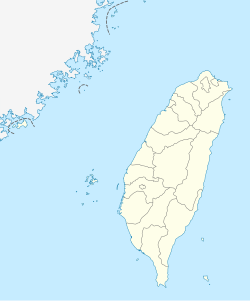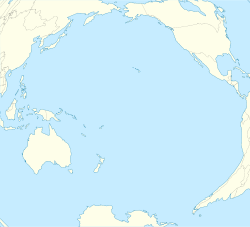Taipei City 臺北市[I] Tai-pak, Taipeh | |
|---|---|
Skyline of Taipei from Elephant Mountain with Taipei 101 (left) | |
| Etymology: Wade–Giles: Tʻai²-pei³; lit. 'North of Taiwan' | |
| Nickname(s): The City of Azaleas | |
 | |
| Country | Taiwan |
| Settled | 1709 |
| Renamed Taihoku | 17 April 1895 |
| Provincial city status | 25 October 1945 |
| Provisional national capital | 7 December 1949 |
| Reconstituted as a Yuan-controlled municipality | 1 July 1967 |
| City seat | Xinyi District 25°02′15″N 121°33′45″E / 25.03750°N 121.56250°E |
| Districts | 12 |
| Largest district | Daan District |
| Government | |
• Mayor | Chiang Wan-an (KMT) |
| Legislature | Taipei City Council |
| National representation | |
| 8 of 113 constituencies | |
| Area | |
• Total | 271.80 km2 (104.94 sq mi) (16th) |
• Water | 2.7 km2 (1.0 sq mi) |
| Population | |
• March 2023 estimate | 2,494,813 (4th) 9,078,000 (urban)[1] (4th) |
| GDP (PPP) | 2016 estimate |
• Total | $65,539 (1st) |
| GDP (nominal) | 2016 estimate |
• Total | NT$990,292 (1st) |
| Time zone | UTC+8 (National Standard Time) |
| Calling code | (0)2 |
| Postal code | 100–116 |
| ISO 3166 code | TW-TPE |
| Website |
|
| Symbols | |
| Bird | Formosan blue magpie (Urocissa caerulea) |
| Flower | Azalea (Rhododendron nudiflorum) |
| Tree | Banyan (India laurel fig, Ficus microcarpa) |
| Taipei City | |||||||||||||||||||||||||||||||||||||||||||||||
|---|---|---|---|---|---|---|---|---|---|---|---|---|---|---|---|---|---|---|---|---|---|---|---|---|---|---|---|---|---|---|---|---|---|---|---|---|---|---|---|---|---|---|---|---|---|---|---|
 "Taipei" in Traditional (top) and Simplified (bottom) Chinese characters | |||||||||||||||||||||||||||||||||||||||||||||||
| Traditional Chinese | 臺北市 | ||||||||||||||||||||||||||||||||||||||||||||||
| Simplified Chinese | 台北市 | ||||||||||||||||||||||||||||||||||||||||||||||
| Literal meaning | "Northern Tai(wan)" | ||||||||||||||||||||||||||||||||||||||||||||||
| |||||||||||||||||||||||||||||||||||||||||||||||
Taipei (/ˌtaɪˈpeɪ/ ; Chinese: 臺北; pinyin: Táiběi),[4] officially Taipei City,[I] is the capital[a] and a special municipality of Taiwan.[7][8] Located in Northern Taiwan, Taipei City is an enclave of the municipality of New Taipei City that sits about 25 km (16 mi) southwest of the northern port city of Keelung. Most of the city rests on the Taipei Basin, an ancient lakebed. The basin is bounded by the relatively narrow valleys of the Keelung and Xindian rivers, which join to form the Tamsui River along the city's western border.[9]
The municipality of Taipei is home to an estimated population of 2,494,813 (March 2023),[10] forming the core part of the Taipei–Keelung metropolitan area, also known as "Greater Taipei", which includes the nearby cities of New Taipei and Keelung with a population of 7,047,559,[10][11] the 40th most-populous urban area in the world—roughly one-third of Taiwanese citizens live in the metro areas. The name "Taipei" can refer either to the whole metropolitan area or just the municipality alone. Taipei has been the political center of the island since 1887, when it first became the seat of Taiwan Province by the Qing dynasty until 1895 and again from 1945 to 1956 by the Republic of China (ROC) government,[b] with an interregnum from 1895 to 1945 as the seat of the Government-General of Taiwan during the Japanese rule. The city has been the national seat of the ROC central government since 1949, it became the nation's special municipality (then known as Yuan-controlled municipality) on 1 July 1967 from provincial city status.
Taipei is the economic, political, educational and cultural center of Taiwan. It has been rated an "Alpha − City" by GaWC.[12] Taipei also forms a major part of a high-tech industrial area.[13] Railways, highways, airports and bus lines connect Taipei with all parts of the island. The city is served by two airports – Songshan and Taoyuan. The municipality is home to architectural and cultural landmarks, including Taipei 101 (which was formerly the tallest building in the world), Chiang Kai-shek Memorial Hall, Dalongdong Baoan Temple, Hsing Tian Kong, Lungshan Temple of Manka, National Palace Museum, Presidential Office Building, Taipei Guest House and Zhinan Temple. Shopping districts including Ximending as well as several night markets dispersed throughout the city. Natural features include Maokong, Yangmingshan and hot springs.
In English-language news reports, the name Taipei often serves as a synecdoche referring to the central government that controls the Taiwan Area. Due to the ambiguous political status of Taiwan internationally, the term Chinese Taipei is also frequently used as a synonym for the entire country, as when Taiwan's governmental representatives participate in international organizations or when Taiwan's athletes compete in international sporting events, including the Olympics.
Cite error: There are <ref group=upper-roman> tags on this page, but the references will not show without a {{reflist|group=upper-roman}} template (see the help page).
- ^ "Demographia World Urban Areas PDF" (PDF). Demographia. Archived (PDF) from the original on 3 May 2018. Retrieved 4 December 2021.
- ^ 《中華民國統計資訊網》縣市重要統計指標查詢系統網 (in Chinese). Archived from the original on 12 June 2016. Retrieved 13 June 2016.
- ^ "Demographia World Urban Areas PDF" (PDF). Demographia. April 2016. Archived (PDF) from the original on 3 May 2018. Retrieved 6 June 2016.
- ^ "Taipei" Archived 8 December 2017 at the Wayback Machine. Random House Webster's Unabridged Dictionary.
- ^ Tseng Ying-yu, Sofia Wu (4 December 2013). "Taipei is Republic of China's capital, minister said". Central News Agency. Archived from the original on 20 September 2018. Retrieved 13 October 2021.
- ^ "Since the implementation of the Act Governing Principles for Editing Geographical Educational Texts (地理敎科書編審原則) in 1997, the guiding principle for all maps in geographical textbooks was that Taipei was to be marked as the capital with a label stating: "Location of the Central Government"". 4 December 2013. Archived from the original on 1 November 2019. Retrieved 1 November 2019.
- ^ a b "2020-2021 TAIWAN at a glance". Ministry of Foreign Affairs, Republic of China (Taiwan). 2021. Archived from the original on 17 November 2021. Retrieved 31 December 2021.
- ^ "Taiwan-U.S. Relations". Taipei Economic and Cultural Representative Office in the United States. 4 December 2021. Archived from the original on 25 November 2021. Retrieved 31 December 2021.
- ^ "Taipei City Government: Home – I. Geographic Overview". Taipei City Government. 23 October 2006. Archived from the original on 9 December 2013. Retrieved 4 August 2009.
- ^ a b 鄉鎮市區人口及按都會區統計. Taiwan Ministry of Interior. December 2015. Archived from the original on 9 December 2013. Retrieved 11 December 2016.
- ^ "Methods and Term Definitions". Directorate General of Budget, Accounting and Statistics. Archived from the original on 12 December 2018. Retrieved 4 August 2009.
- ^ "The World According to GaWC 2020". GaWC - Research Network. Globalization and World Cities. Archived from the original on 24 August 2020. Retrieved 26 August 2020.
- ^ "Taiwan tech industry faces up to South Korea's Samsung". The Seattle Times. April 2013. Archived from the original on 25 August 2017. Retrieved 25 August 2017.
Cite error: There are <ref group=lower-alpha> tags or {{efn}} templates on this page, but the references will not show without a {{reflist|group=lower-alpha}} template or {{notelist}} template (see the help page).












